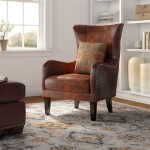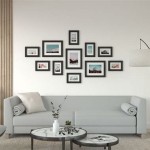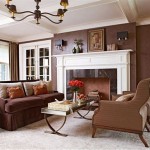Nice Dog Beds For Living Room: Comfort and Style Harmonized
For many dog owners, the living room serves as a central hub for the household, a place for relaxation, entertainment, and quality time with family and furry companions. Therefore, selecting a dog bed that not only provides comfort and support for canine friends but also complements the aesthetic of the living space is crucial. The market offers a wide array of dog beds, each with unique features and design elements to cater to diverse needs and preferences. This article explores the various factors to consider when choosing a dog bed for the living room, focusing on aspects such as size, material, style, and functionality.
Size and Support: Prioritizing Canine Comfort
The primary function of a dog bed is to provide a comfortable and supportive resting place for the animal. Therefore, selecting the correct size is paramount. A dog bed should be large enough to allow the dog to stretch out comfortably, change positions, and sleep without feeling cramped. Measure the dog from nose to tail while it is in a sleeping position to determine the minimum length required. Add a few extra inches for wiggle room to ensure adequate space.
Beyond size, the level of support offered by the bed is equally important, especially for older dogs or those with joint problems. Orthopedic dog beds, often constructed with memory foam or other supportive materials, can provide pressure relief and alleviate pain. These beds conform to the dog's body, distributing weight evenly and reducing stress on joints. Consider the dog's breed, age, and any existing health conditions when determining the appropriate level of support.
For puppies, a bed that is easy to clean and maintain is essential. Accidents are common during the house-training phase, so a waterproof or stain-resistant cover is a practical choice. A smaller bed that provides a sense of security is also beneficial for puppies adjusting to their new environment.
Material and Durability: Balancing Aesthetics and Practicality
The material used in the construction of a dog bed plays a significant role in its durability, comfort, and aesthetic appeal. A wide range of materials is available, each with its own advantages and disadvantages. Common options include:
- Polyester: This is a popular choice due to its affordability, durability, and resistance to stains and odors. Polyester beds are often machine-washable and relatively easy to maintain.
- Cotton: Cotton beds are soft and breathable, making them a comfortable option for dogs, especially in warmer climates. However, cotton can be more prone to staining and may require more frequent washing.
- Fleece: Fleece is a soft and cozy material that provides warmth and comfort. It is a good choice for dogs that enjoy snuggling or living in colder climates. Fleece can be prone to shedding and may require regular vacuuming.
- Canvas: Canvas is a durable and sturdy material that can withstand wear and tear. It is a good option for dogs that are prone to chewing or scratching. Canvas beds can be less comfortable than other options, but can be paired with a soft blanket or cushion.
- Memory Foam: This material is commonly used in orthopedic dog beds due to its ability to conform to the dog's body and provide pressure relief. Memory foam can be more expensive than other options, but it offers superior support and comfort for dogs with joint problems.
- Waterproof Materials: Beds constructed with waterproof liners or covers are ideal for dogs prone to accidents or those that spend time outdoors. These materials protect the inner filling from moisture and odors, making the bed easier to clean and maintain.
When selecting a material, consider the dog's breed, coat type, and any allergies or sensitivities. Some dogs may be allergic to certain fabrics, so it is important to choose a hypoallergenic option if necessary. The durability of the material is also a key factor, especially for active dogs or those prone to chewing.
The design and construction of the bed can also impact its durability. Look for beds with reinforced seams and sturdy zippers to prevent tearing and damage. A well-constructed bed will withstand regular use and washing, ensuring it provides long-lasting comfort and support for the dog.
Style and Placement: Integrating the Bed into the Living Room Decor
Beyond functionality, the aesthetic appeal of a dog bed is an important consideration for many homeowners. The bed should complement the existing decor of the living room and seamlessly integrate into the overall design scheme. Numerous styles and designs are available, ranging from traditional to modern, allowing owners to choose a bed that reflects their personal taste.
Common dog bed styles include:
- Pillow Beds: These are simple and versatile beds that can be easily moved around the living room. They are often filled with soft materials such as fiberfill or foam and can be covered in a variety of fabrics.
- Donut Beds: Donut beds feature a raised rim that provides a sense of security and comfort for dogs that enjoy curling up while sleeping. They are often filled with plush materials and can be a stylish addition to the living room.
- Bolster Beds: Bolster beds have raised sides that provide support for the dog's head and neck. They are a good option for dogs that like to rest their heads on pillows or furniture.
- Crate Beds: These beds are designed to fit inside dog crates, providing a comfortable and supportive surface for the dog to rest on. They are often made from durable materials that can withstand wear and tear.
- Sofa Beds: Sofa beds are designed to resemble miniature sofas, providing a stylish and comfortable resting place for dogs. They often feature raised backs and armrests and can be a focal point in the living room.
The color and pattern of the dog bed should also be carefully considered. Choose colors that complement the existing furniture and accessories in the living room. Neutral colors such as gray, beige, or brown are versatile options that can easily blend in with any decor. Patterns can add visual interest to the space, but avoid overly busy or distracting designs.
The placement of the dog bed is also important. Choose a location that is away from high-traffic areas and provides a sense of privacy and security for the dog. The bed should be easily accessible and positioned in a place where the dog can easily see and interact with family members. Avoid placing the bed in direct sunlight or near sources of heat or cold. A corner of the living room or a space near a window can be ideal locations.
Furthermore, consider incorporating the dog bed into the overall layout of the living room. Position it strategically to create a cohesive and balanced look. Coordinating the style and color of the bed with other furniture and accessories can help to create a harmonious and inviting space for both humans and canines.
Maintenance and Cleaning: Ensuring Hygiene and Longevity
Regular cleaning and maintenance are essential for keeping a dog bed fresh, hygienic, and long-lasting. Dog beds can accumulate dirt, hair, odors, and allergens, which can be detrimental to the dog's health and the overall cleanliness of the living room.
The frequency of cleaning will depend on the dog's breed, shedding habits, and lifestyle. Dogs that spend a lot of time outdoors or have allergies may require more frequent cleaning. As a general guideline, the dog bed should be washed at least once a month, or more often if needed.
Before washing the bed, remove any loose hair or debris with a vacuum cleaner or lint roller. Check the care label for specific washing instructions. Many dog beds can be machine-washed and dried, but some may require hand-washing or professional cleaning.
Use a mild detergent that is safe for dogs. Avoid using harsh chemicals or bleach, as these can irritate the dog's skin. Ensure that the bed is thoroughly rinsed to remove all traces of detergent. Tumble dry on a low setting or air dry the bed completely before allowing the dog to use it.
For beds with removable covers, wash the cover separately from the inner filling. This will help to prevent the filling from clumping or losing its shape. If the filling cannot be washed, consider spot-cleaning any stains or odors with a mild detergent and water.
In addition to regular washing, consider using a pet-safe deodorizer to freshen the bed between washes. This can help to eliminate odors and keep the bed smelling clean. Regularly vacuuming the bed can also help to remove loose hair and debris.
By following these maintenance and cleaning tips, dog owners can ensure that their dog beds remain a comfortable, hygienic, and stylish addition to the living room for years to come.

Attention Pet Owners Ruggable Just Launched Their First Ever Dog Beds

Atengnes Large Brown Memory Foam Pet Bed For Small Dogs And Cats With Washable Removable Cover Non Slip Base Waterproof Liner Yd240290

56 Awesome Dog Beds For Indoors And Outdoors Digsdigs

Shop For Stylish Dog And Cat Beds That Look Like Sofas Hgtv

Shldybc Cozy And Comfy Dog Bed Cat All Seasons Paw Shape Warm Cushion Pet Sleeping Beds Soft Plush

Farmhouse Style Dog Bed Liz Marie Blog

Memory Foam Bolster Dog Beds Omlet

Rectangle Pet Bed For Medium And Large Dogs Durable Elevated Dog Sofa Blue Comfortable Couch Modern Cuddlewood

Funnyfuzzy Large Round Funny Dog Bed Fuzzy Paw Pink Xl

The Wild World Of Modern Furniture








